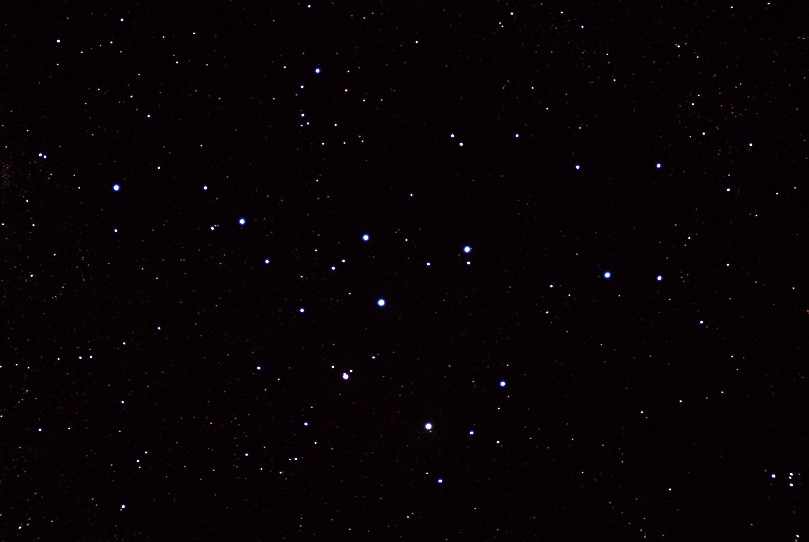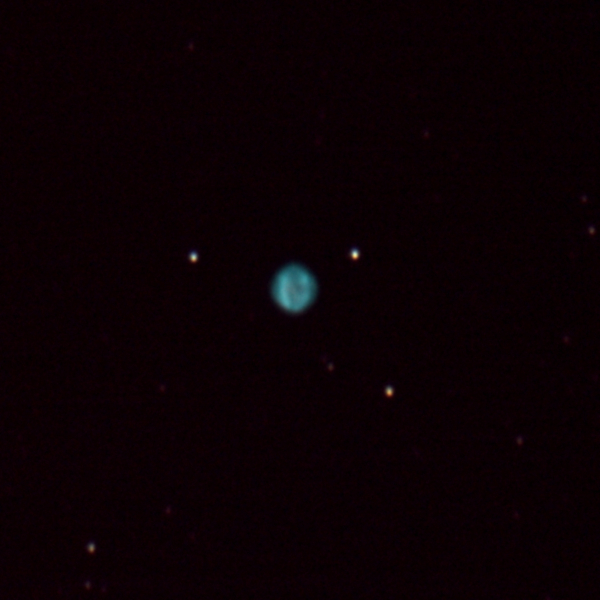I’m slowly working my way through the pictures I took in Yorkshire. This one is of an object I spotted as a bright hazy patch while scanning the Milky Way through binoculars. A long exposure photo confirmed it as the Swan / Omega nebula. To my eyes it looks more like a swan than the uppercase Greek letter omega (?).
M17 is an object very similar to the Orion Nebula – an active star forming region. The cluster of young stars within it have yet to reveal themselves visually as they are largely obscured by dust within the nebula. They can however be studied in infra-red where the dust absorbtion is much less. The bright bar of the nebula is about 20 light years long and the nebula is located in the Sagittarius arm of our Galaxy, 5900 light years away.
This image is comprised of 7 three minute exposures through the ZenithStar 70 at ISO1600 with an unmodified Canon 350D.


